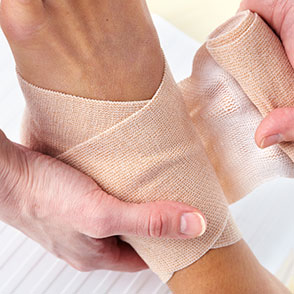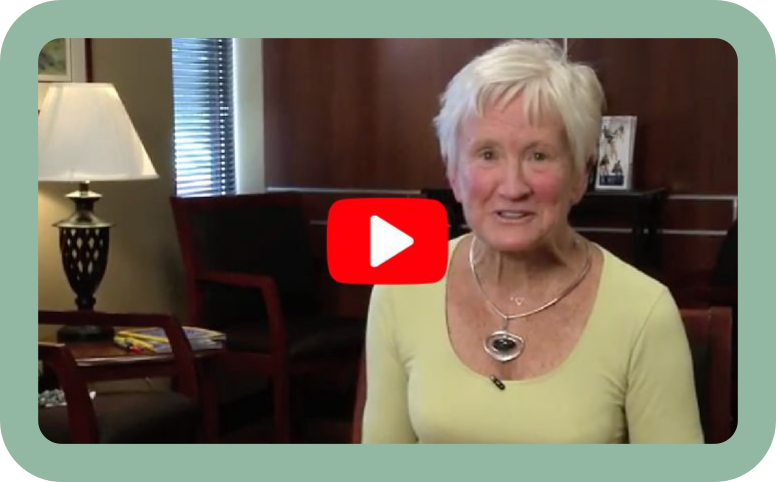Contact us today.
Don’t Live With Painful Leg Ulcers
 People with varicose veins often have to deal with symptoms like: pain, cramps, heaviness, aching legs, fatigue and the unsightly appearance of the veins themselves.
People with varicose veins often have to deal with symptoms like: pain, cramps, heaviness, aching legs, fatigue and the unsightly appearance of the veins themselves.
“However, there is another far more serious side effect of varicose veins that can occur if you let the condition persist without the care of a venous and lymphatic medicine specialist. That’s the development of Venous Leg Ulcers.”
The condition starts with diminished circulation impairing blood flow back to the heart. That causes a backup of blood in the lower extremities which results in swelling. Swelling causes circulation problems that robs the surrounding tissue of oxygen and nutrients. That makes the tissue fragile so even the slightest bump or bruise can cause it to break down, opening a venous lesion or ulcer.
Since the skin’s ability to heal has been compromised by poor circulation, leg ulcers are slow to heal. In many cases these wounds simply will not heal without the intervention of a venous and lymphatic medicine specialist.
Fully one percent of the United States population will experience the condition of venous stasis ulceration, more commonly called Venus Leg Ulcers. Eighty percent of all leg ulcerations are venous leg ulcers ulcerations.
About Venous Insufficiency
Venous insufficiency is a chronic condition caused by the impairment of the normal flow of blood up and out of the leg. Normal veins carry blood back to the heart aided by a series of one-way valves. The valves open to allow venous blood out of the legs and close to prevent blood from flowing back to the feet. Venous insufficiency is the result of damage directly to the valves, or more commonly, as indirect valve damage from structural wall abnormalities of the vein itself.
The dilated vein and valve allow the reverse flow of venous blood from thigh to foot, or higher area of the leg to lower. As the blood begins to pool in the lower legs, a repeated cycle of further valve disjunction, vein stretching and bulging occurs.
Symptoms of Venous Insufficiency
Symptoms associated with venous insufficiency and varicose veins arise from the increased venous blood pressure and chronic inflammation of the veins. The byproducts of metabolism in venous blood, which is not easily recycled, leads to a low-grade inflammatory state producing the symptoms associated with vein disease.
“Untreated venous insufficiency may cause enough inflammation of the surrounding skin to result in a venous stasis ulceration (leg wound).”
Venous insufficiency ultimately results in the symptoms of leg fatigue, aching, heaviness, cramping, restlessness and pain.
Common and less common causes of venous leg ulcers
The common causes of venous leg ulcers are:
- Advancing age
- Family history of varicose veins
- Multiple pregnancies
- Over weight
- Leg trauma
- High blood pressure
Less common causes of lower leg ulcerations include:
- Diabetes
- Rheumatoid arthritis
- Vasculitis
- Malignancies
- Prolonged external skin pressure
Treatment & Prevention of Painful Leg Ulcers
Duplex ultrasound has become the testing modality of choice for venous insufficiency. Ultrasound is well suited to evaluate the venous anatomy for purposes of diagnosis and for guiding treatment of vein disease and venous stasis ulcer care.
The treatment of venous stasis ulcerations begins with a detailed physical examination and duplex ultrasound diagnostic evaluation. Duplex ultrasound will determine the location and degree of venous insufficiency. The venous insufficiency will need to be controlled and eventually eliminated.
Endovenous Laser Ablation and Ultrasound-Guided Sclerotherapy are a very effective combination of treatments to eradicate venous insufficiency. Early reduction in swelling, improved blood flow back to the heart and meticulous wound care of a stasis ulceration aid in healing.
This is accomplished through:
- Leg Elevation
- Leg Exercise
- Leg Compression and Standard Wound Care Techniques.
- Graduated Compression Stockings (of medical-grade compression strength treats venous insufficiency by applying counter-pressure of decreasing strength from the foot and ankle to the thigh.)
Enhancing the venous blood flow out of the leg decreases venous pressure and swelling at the ulcer site. The ulcer site will heal more rapidly if it is clear of infection, inflammation, edema and pressure from varicose veins. In addition to graduated compression stockings and short -stretch (non-elastic) bandages, topical antibiotics, topical steroids, anti-microbial self-debriding pads and sharp debridement of devitalized tissue.
Painful Leg Ulcers Do Not Heal by Themselves.
Venous Leg Ulcers need skilled medical care from a certified venous and lymphatic medicine specialist. If you or a loved one suffer from a leg would that will not go away or have bruising on the legs and feet that can’t be explained, please call Dr. Sorenson at the Vein Specialists of Illinois to schedule an appointment.
Click on this link to schedule an appointment online or call us at (847) 468-9900: To Get Relief Now!

